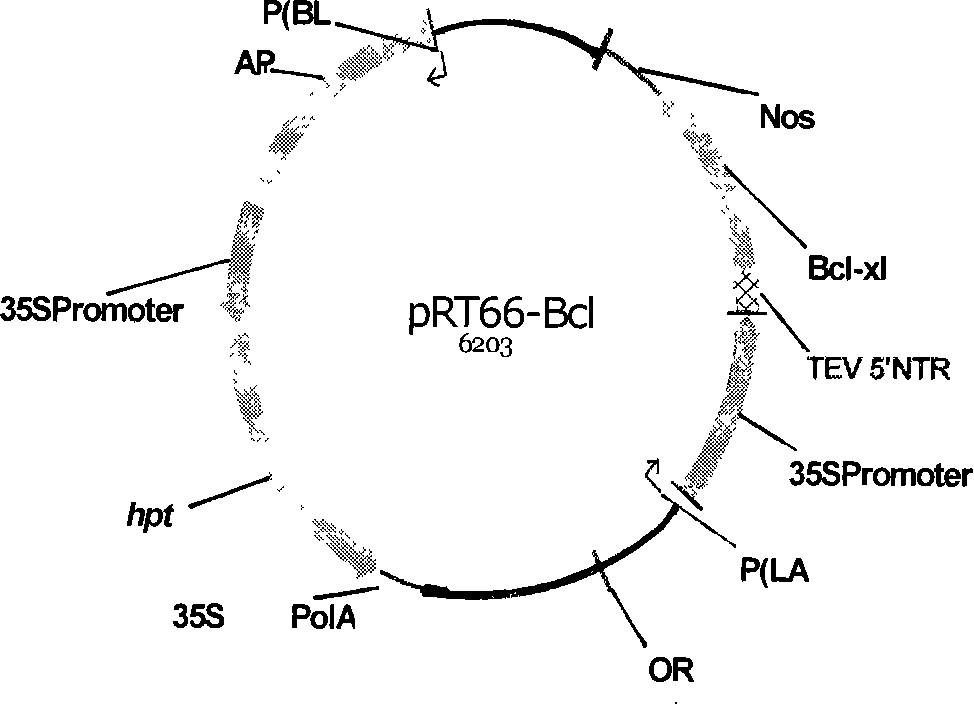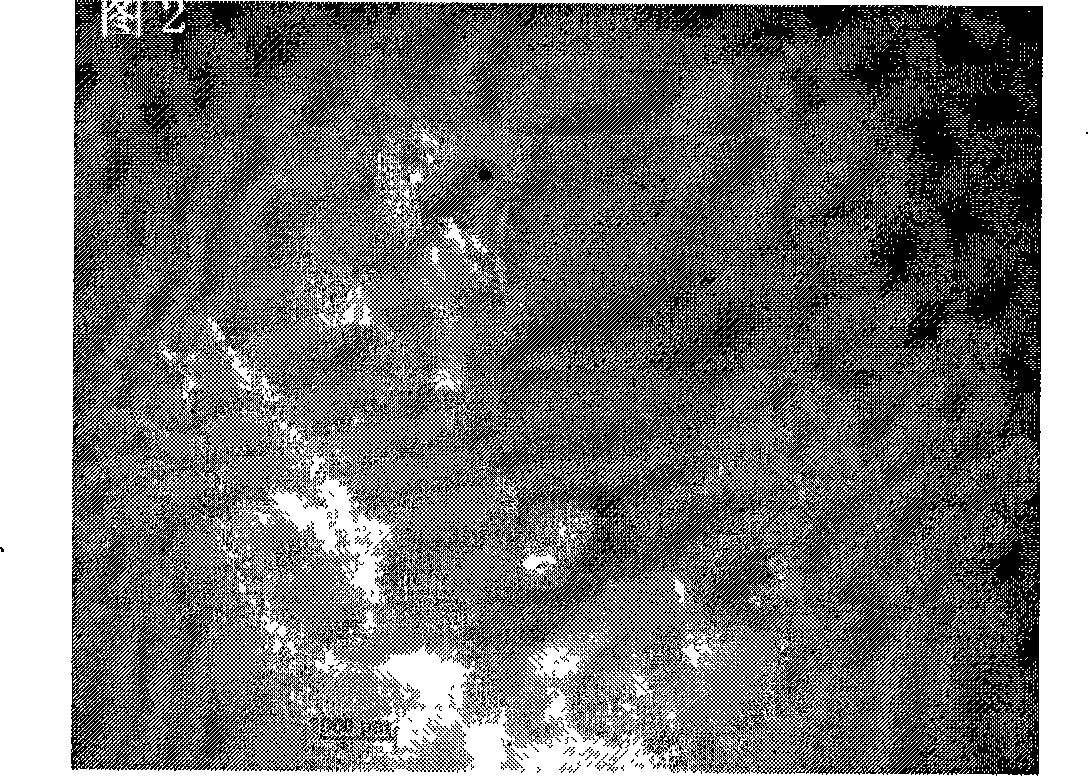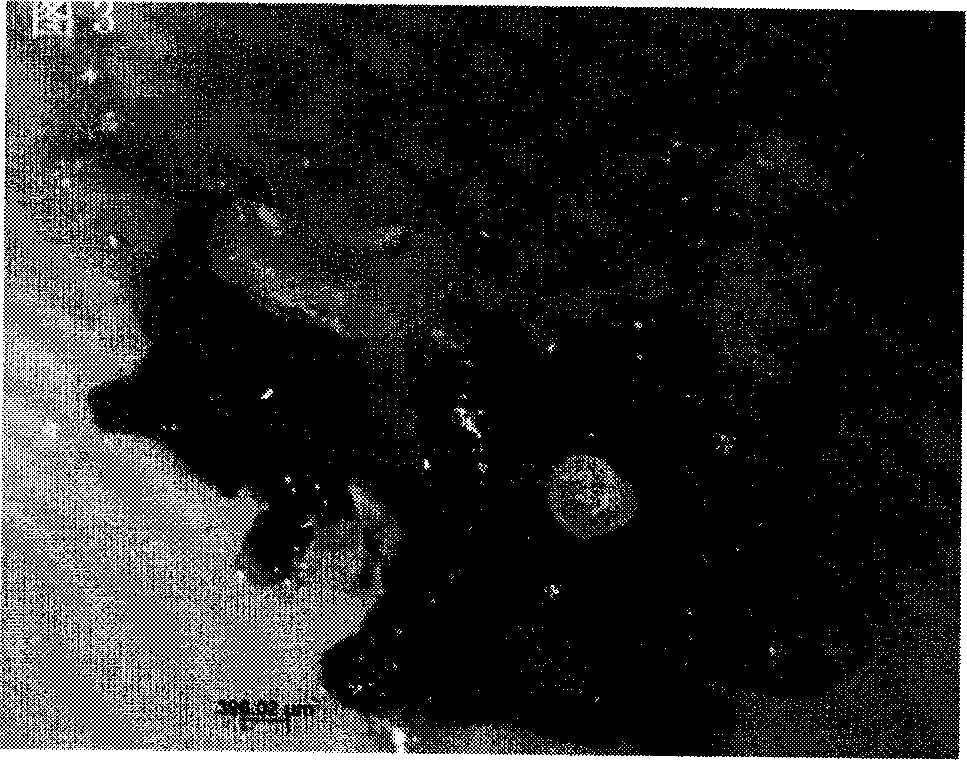Transgene method for peanut
A transgenic, peanut technology, applied in the field of bioengineering, can solve the problems of chimera, escape, low transformation and regeneration efficiency, etc.
- Summary
- Abstract
- Description
- Claims
- Application Information
AI Technical Summary
Problems solved by technology
Method used
Image
Examples
Embodiment 1
[0035] Example 1: Obtaining repeated somatic embryogenic cultures of peanut.
[0036] Peanut varieties Yueyou 116 (cultivated by Guangdong Academy of Agricultural Sciences, continuous flowering subspecies pearl bean type, subsp. Fastigiata Var. vulgaris, spanish type Spanish type), Luhua 9 (cultivated by Shandong Academy of Agricultural Sciences, continuous flowering subspecies intermediate type), 'Georgia Green' (Cultivated by the University of Georgia, USA, alternate flowering subspecies common type, Subsp. hypogaea Var. hypogaea, runner / virginia type Lanna / Virginia type). These varieties are high-quality or disease-resistant peanut varieties, which are one of the main cultivated varieties in various regions. The pods were planted and harvested according to normal cultivation management and fertilizer and water measures (Yueyou 116 and Luhua 9 were kept by myself, and 'Georgia Green' was obtained from the University of Georgia, USA). Ripe fruit pods are stored in sealed pla...
Embodiment 2
[0039] Example 2: The exogenous DNA or gene is constructed in an appropriate plant expression frame and connected to the same vector, extracting and purifying the exogenous gene plant expression vector (plasmid) and determining its concentration.
[0040] The target gene human Bcl-xl gene plant expression cassette in pZP211-Bcl-xL (Dickman MB, ParkYK, Oltersdorf T, Li W, Clemente T, French R. Abrogation of diseasedevelopment in plants expressing animal antiapoptotic genes. Proc NatlAcad Sci USA, 2001 , 98:6957-6962) were digested with PstI and cloned into pUC19 (preserved in our laboratory), and then subcloned into plasmid pRT-66 (Dr.R. Gift) plant expression vector, plasmid pRT-66 with selection marker gene (hygromycin resistance hpt gene) plant expression cassette ( R, Maas C, Horicke-Grandpierre C, Schell J, Steinbiss H-H. Expression vectors for high-level gene expression in dicotyledonous and monocotyledonous plants. Meth Enzymol, 1993, 217:66-78). Plasmid vector constr...
Embodiment 3
[0041] Example 3: Microprojectile Bombardment Transformation of Duplicate Somatic Embryogenic Cultures and Selection of Independently Resistant Cell Lines.
[0042] Get about 10-15 repeated somatic embryogenic embryogenic tissues from the peanut repeated somatic embryogenic culture after 3-10 months of initiation of cultivation in Example 1, and place them in the SEM medium within about a 3 cm diameter area ( about 7cm 2 ). Mix the prepared 50 μl gold microparticles (diameter 0.6 or 1.0 μm, Bio-Rad) suspension (60 mg / ml) (Ozias-Akins et al. 1993) with 5 μl (1 μg / μl) containing the screening gene (hpt) under the control of the CaMV35S promoter Mix with the plasmid of the plant expression cassette of the gene of interest (human Bcl-xl) for non-screening. Add 50 μl of 2.5M calcium chloride and 20 μl of 0.1M spermidine successively while shaking. Shake to suspend for 5-8 minutes, and briefly centrifuge at 10,000rpm. Gold microparticles were rinsed with 100% ethanol and resuspe...
PUM
| Property | Measurement | Unit |
|---|---|---|
| conversion efficiency | aaaaa | aaaaa |
Abstract
Description
Claims
Application Information
 Login to View More
Login to View More - R&D
- Intellectual Property
- Life Sciences
- Materials
- Tech Scout
- Unparalleled Data Quality
- Higher Quality Content
- 60% Fewer Hallucinations
Browse by: Latest US Patents, China's latest patents, Technical Efficacy Thesaurus, Application Domain, Technology Topic, Popular Technical Reports.
© 2025 PatSnap. All rights reserved.Legal|Privacy policy|Modern Slavery Act Transparency Statement|Sitemap|About US| Contact US: help@patsnap.com



